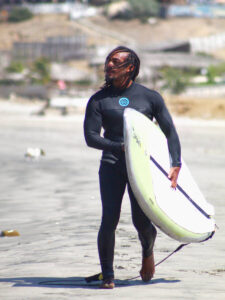The trekking in Chapada Diamantina from Vale do Capão to Lençóis is a real challenge!! It requires a good fitness level and proper preparation. In this guide, we share everything you need to know about this adventure. It is an excellent trek for adventurers looking for a way to fully immerse themselves in Chapada’s landscapes.
It’s an experience where you camp in the wilderness and have a chance to see a diverse range of animals, insects, and plants on the way. This tour is the most challenging of all the hiking and trekking tours offered by Vale do Capão and Lençóis agencies. Several agencies are not offering this adventure due to the lack of interest by the tourists.
The best way to organize this experience is to contact a tour guide and explain your experience level trekking so you can better plan the duration of this trek. Our tour guide was Rafael, and our experience with him couldn’t be better!!! He was very knowledgeable, attentive, and patient in explaining everything we wanted to learn from him during this adventure.
We did all 41kms in 3 days, where on each day, we had a different challenge to overcome. Another interesting fact was the frequent change of landscapes, creating an expectation that something new would come in the next kilometers.
If you want to know more about this trekking tour and our experience, keep reading this blog post.
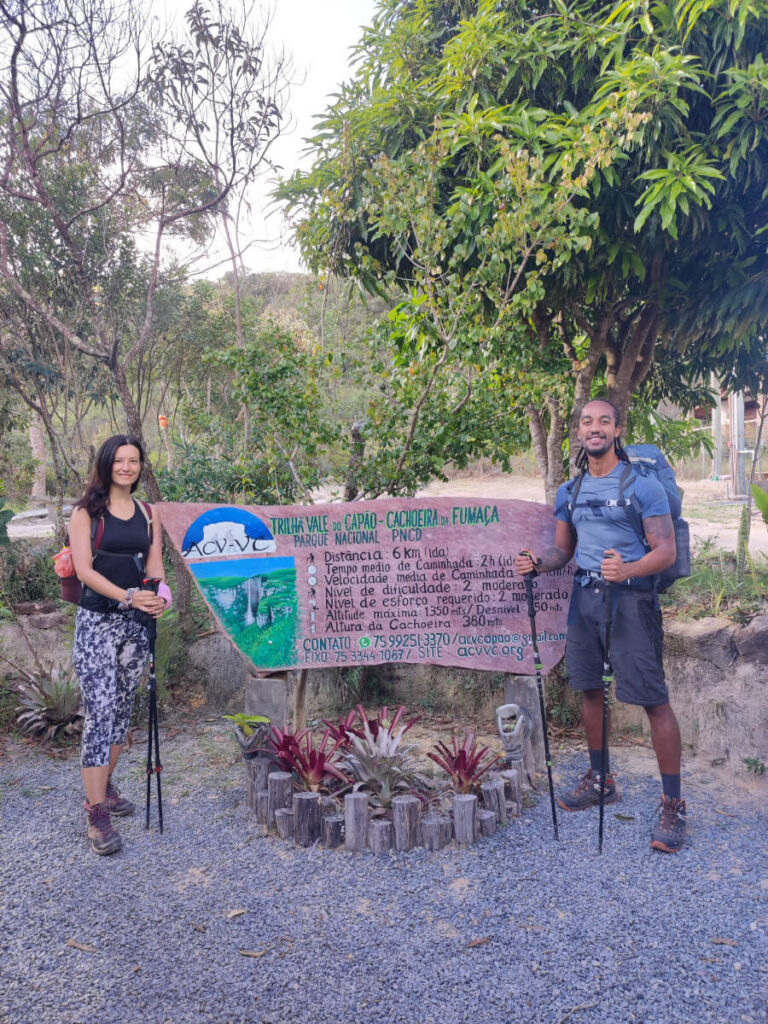

Quick facts about this adventure
- Length: 41km
- Difficulty: Hard
- Elevation gain: 2,442m
Following is the route of this adventure, in case you want to have a better view of the trail. Click here to download the GPX file.
Table of Contents
How dangerous is this trek?
Danger can show up in many ways when trekking in Chapada Diamantina. We understand the importance of writing this section so you can better picture the challenge before deciding to do it.
Closed vegetation
The trails are usually narrow, with closed vegetation around them. Tree branches and high grass are constantly crossing the way. One of the dangers is that when hiking through several hills, a small mistake can bring you down from the cliffs, and you will hike through these cliffs often. The vegetation is so dense in some spots that it covers the edges of the trails.
Rocks
If it was raining the days before the trek, you must pay double attention while hiking. Rocks will be slippery and the land softer. A hard step can push your body to the ground, moving a bit of land out of the already narrow trail. If that happens, it can push rocks down, and they can hit someone behind you.
You will have to climb through small and big rocks in several moments. The small ones are dangerous because they can be slippery. Always step on the edges of these rocks to avoid sliding on them.
When facing big rocks, climbing using your hands will be necessary to give you extra support. Sometimes, you will climb and still have tree branches on the way up. Always watch where you are going before making a move.
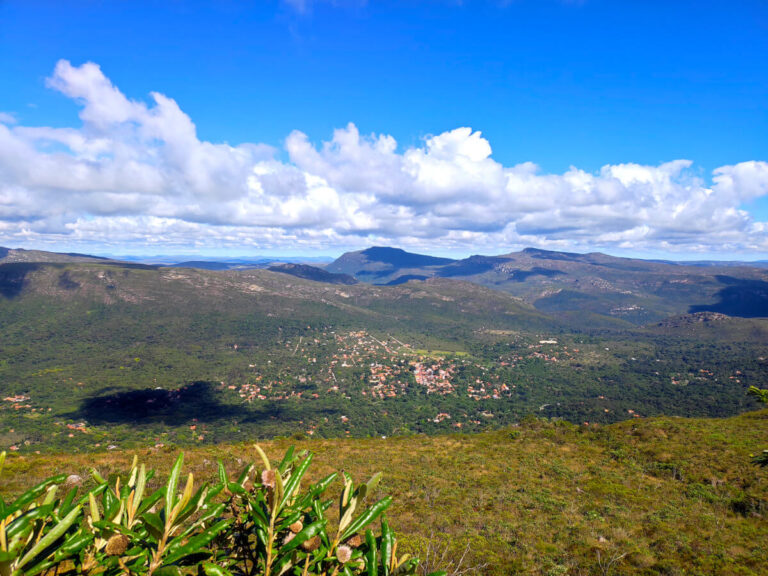
Animals
Chapada is full of animals: jaguars, foxes, snakes, spiders, and many others are just a scratch of its fauna. When camping there, always close your backpacks well. Otherwise, animals can smell the food inside and try to get it.
It’s rare to see jaguars during the hike because they are animals with nocturnal habits. Mind your step and pay attention to your surroundings when trekking.
Water sources
Plenty of water sources are on the way, so bringing only one water bottle is enough. Often, you will have a chance to refill it and continue your adventure. However, the water in chapada diamantina is rich in iron and minerals. It can cause stomach issues for those who aren’t used to it.
An excellent strategy to avoid problems during the trek is to drink the water from Chapada a few days before the tour and watch it if you have issues later on. If you have stomach problems with the water, you must bring enough water for the entire adventure.
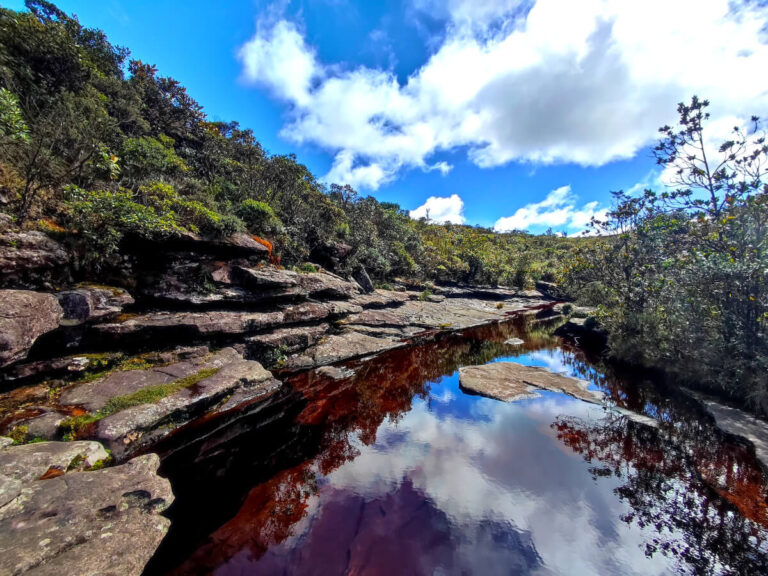
Can I do this tour without a guide?
If it is your first time trekking in Chapada Diamantina, do it with a guide. A reason to do this tour without a guide is if you have done this trek a couple of times or you are a very experienced hiker with deep knowledge about the Chapada Diamantina area.
We found it essential to have a tour guide with us. His knowledge of the area and the trail was necessary to keep us safe. Often, we were hiking on trails that we thought were anything but a track. Bush bashing is something to get used to in this trek, which will happen many times.
There is no mobile network in the area, and our first signal came to our cellphones only an hour before finishing the 3rd day, close to Lencois. This situation creates an extreme need to have someone experienced with you in case some emergency happens.
Accidents can happen
On the second day of this tour, we met another group of hikers. One of them fell and broke two ribs, and his guide had to ask for help because he couldn’t walk. The tour guide had to hike to Vale do Capão and ask for help to rescue the injured man.
The rescue came only the next day, which was very difficult. The helicopter couldn’t find a place to land and get the injured man. The solution was to tie him using ropes to the helicopter and fly him to the nearest hospital.
We often imagine the outcome of the same story without an experienced tour guide to quickly go to the nearest place to ask for help.
Does it make a difference starting this trek from Lencois?
Yes, it does. Vale do Capão is at a higher altitude than Lencois. If you start this tour from Lencois, you will have more uphills. One of the greatest things about this tour was to finish it with a great bath in the Ribeirao River!! It gives a fantastic refreshment to your body shortly before spending the last hour of this trekking in Chapada Diamantina.
Overview of the route
Now that you know about the possible dangers of this trek, let’s talk about the overview of the route.
Starting from Vale do Capão, you will walk until the beginning of the trail that leads to the Fumaça waterfall, the second biggest waterfall in Brazil!!!
From the top of Fumaça, the trail will lead you to Serra do Macaco. The trail continues down the hill to the Toca do Macaco, a small cave used by miners in the past. This place will be the base camp for the first night.
On the second day, starting from the base camp, you will visit the bottom of the Fumaça waterfall and return. After that, the Capivara waterfall will be the final destination. There will be the base camp for the second night.
The last day starts from the Capivara waterfall, passing by the Mitigal waterfall and going uphill to Toca da Onça. From the top of Toca da Onça, the trail continues downhill towards Lencois, passing by the Ribeirao River and Muritiba Park.

What to bring with me?
This trekking in Chapada Diamantina doesn’t have any place on the way to buy something, and you need to bring everything with you, including food for all three days, a tent, and sleeping bags. Our tour guide brought a useful mini-cooker to prepare our meals in this adventure.
In summary, this is a list of the essentials:
- Water bottle
- Enough food for three days
- Tent
- Sleeping bag
- Thermal isolator to put under the sleeping bag
- Mini-cooker to prepare the meals
- Basic utensils for cooking
- Sunscreen protection
- Sunglasses
- High socks or hiking pants to cover the legs
- Long sleeve to protect arms
- Soft jacket (temperature can go to 11° during the evenings)
- Hiking shoes
- Hiking poles
- Flip flops
- Attack backpack
- Raincoat (depending on the season)
- Headlamp or flashlight
- Basic hygiene utensils
- Towel
To protect me from the weather
For the tent, it’s essential to have a thermal isolator to put it under the sleeping bags. It’s cold during the evenings in Chapada and can be even more depending on the weather conditions.
During the day of our tour, the temperature was in the range of 25-28 degrees. However, the sensation was 13-16 degrees during the two evenings. When we were consulting the weather forecast before our tour, it was indicated that the evening temperature would be 15-18 degrees.
To protect me during the hike
Since the vegetation is closed with tree branches scratching your arms and legs, it’s good to have a long sleeve to protect your arms. For your legs, wear hiking pants or shorts combined with very long socks.
I had long socks that go 10 cm after the ankle, but still, I got several cuts and scratches on my legs. Football socks are great to protect you in this case.
Hiking poles will help a lot when trekking in Chapada Diamantina!! When going uphill, they will support splitting the load and effort to your arms. Going downhill, they will help you reduce the burden on your knees.
Sunglasses or anything to protect your eyes is also important. On the second and third day, you will face high grass that can reach your face. This grass is quite sharp and can be dangerous if it touches your eyes.
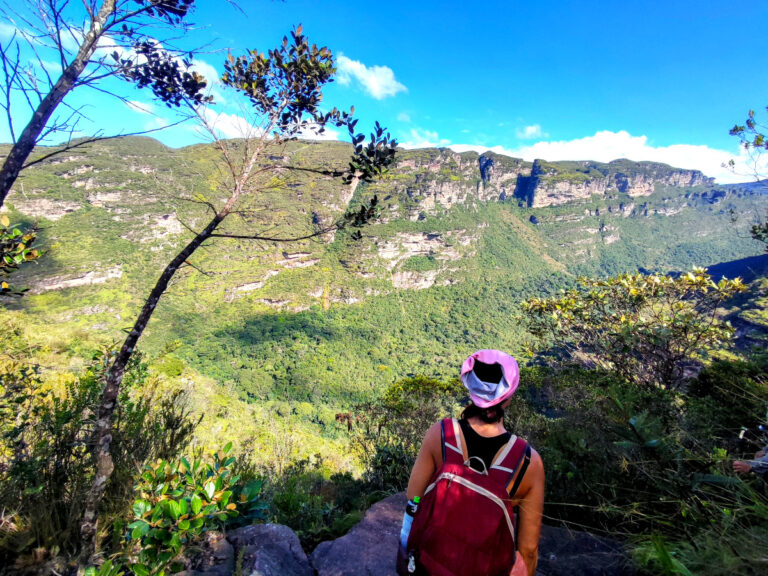
The itinerary
If you want to know the look of each day in deeper detail, this section is for you. Each day has its challenge, which kept the tour very dynamic:)
1st day
The first day starts with an easy 30-minute walk to the beginning of the trail. It can be less or more, depending on where your accommodation is. We had a very stay on the Chale Savi. The staff was very kind and gave us plenty of information about the area. The official start of the trail is right after the Association of Guides(ACV-VC) from Vale do Capão.
It’s essential to give the association some information, like your end goal and your name. They use this data to know how many people are hiking in the national park. Like this, it’s easy for them to know if someone who would return to Vale do Capão is lost.
Since the association works based on donations, it’s good to contribute to their work. They are risking their lives and helping others out of free will and kindness.
Once you start hiking from the association, it will be an uphill of 320m to the top of Fumaça waterfall. On the way, there are two viewpoints where you can see the entire Vale do Capão. Stop for a moment to appreciate the views and take a break.
Fumaca Waterfall
Once you reach the top of the hill, it will be 1-2 km more to the viewpoint at the top of Fumaça waterfall. It would be best to lie on the rocks at the edges to watch the waterfall. The wind blows very strongly, so don’t try to stand up or sit close to the edges. It’s important to know that Fumaça is one of the highlights in the area when people are hiking or trekking in Chapada Diamantina. Many tourists visit the top of the waterfall, so don’t be surprised if you see many people there.
After appreciating the top of the Fumaca waterfall, it’s time to return to the trail towards the Toca do Macaco. Before reaching the burrow, you will pass by the Serra dos Macacos. It will be a trail with closed vegetation and several moments where the track’s edges are at the borders of the hills. So extra care is necessary when passing by the Serra.
The final destination of the day (Toca do Macaco) is 6-7 km after the downhill trail of the Serra dos Macacos. There, you will set up the base camp and rest.

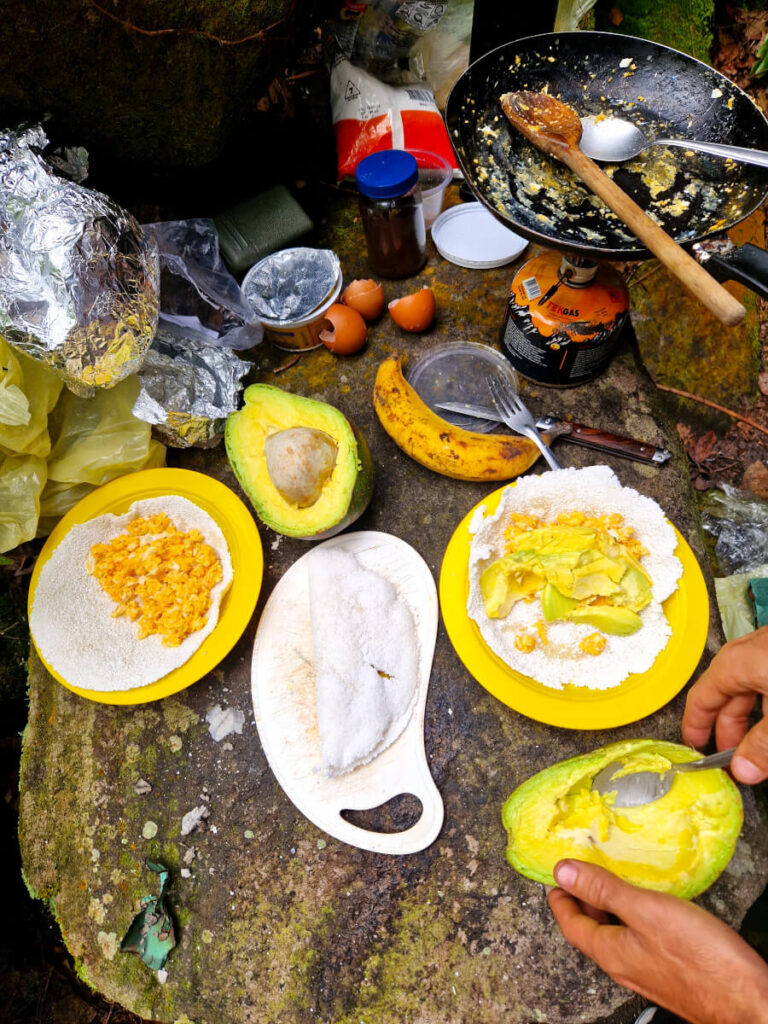
2nd day
On this day, you will carry less weight most of the time. After waking up and getting ready to start, you will use a small backpack to attack the Fumaça waterfall from the bottom.
If you want to know the meaning of attacking a waterfall, it’s a term used by guides to visit a waterfall with a small backpack of basic utensils like water and food. It is a term used when the visit to a place lasts for a few hours before returning to the starting point.
Attacking the Fumaça waterfall is the primary goal of the second day. The hike will be challenging with slippery rocks(it can be more or less depending on the season) and tons of soft rock climbing.
The trail to the bottom of Fumaça is the main reason this tour is challenging. Most of the time, we felt we were not following a path, only bashing between trees, being the first ones creating the trail.
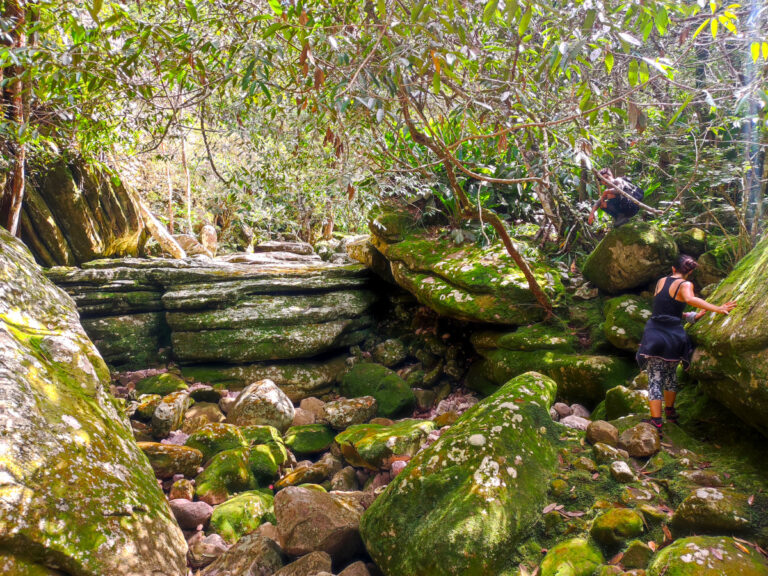
Ultimately, you will be delighted by the view of the waterfall. If you are in the dry season, the water flow will be smaller, but nothing that would reduce your experience. At the bottom, there’s a swimming pool waiting for you. Enjoy!!!
On the way back, you will return to the base camp at Toca do Macaco and prepare to leave for the next base camp. It will be a 1-1:45 hrs hike until a small burrow near the Capivara waterfall, the base camp for the second night.
In the second base camp, you will sleep close to the river, so bring some earplugs. The sound of the river can be loud and cause some issues for some people to have a nice sleep.

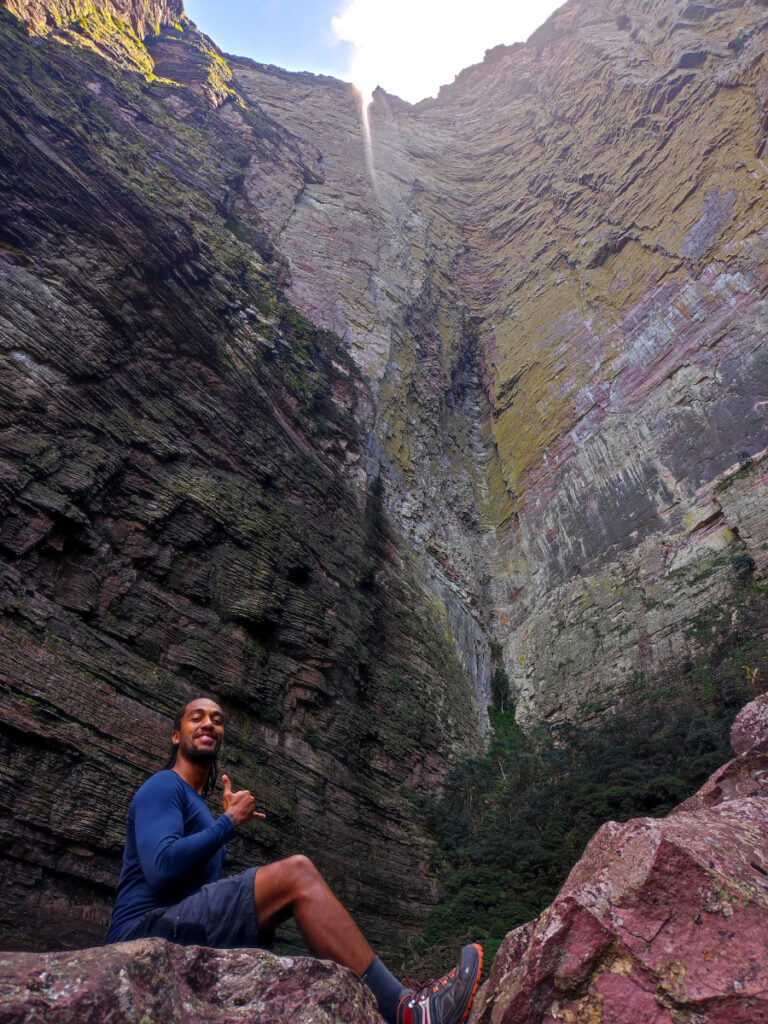
3rd day
You will pass by the beautiful Capivara waterfall from the base camp. Maybe you won’t swim there because it will be very early. Don’t worry about that because you will have more opportunities for a bath during the day 🙂
Continuing from the Capivara waterfall, you will climb through very closed vegetation and rocks that might be wet and slippery. A type of high grass is often present and can cut your face and neck due to its sharpness. Protect your eyes when hiking from Capivara with sunglasses, or use your hands to cover them.
After a few km, you will reach the Palmital waterfall—another beauty of the Chapada Diamantina National Park. From Palmital, you will climb a bit more when continuing to the next stop: Toca da Onça.
Toca da Onça offers a fantastic view of the area. You can see the Capivari waterfall and have an excellent picture of the valley. It will be around lunchtime when you reach Toca da Onça, so take a break and replenish the energies in your body.
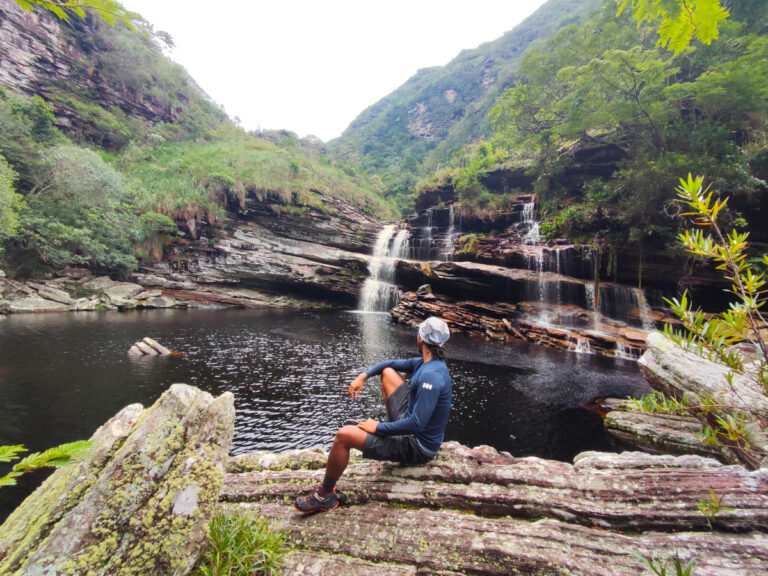
Ribeirao do Meio River
The next destination is the Ribeirao do Meio River. From Toca da Onça, the trail will continue mostly downhill. That means you are getting closer to Lencois.
Ribeirao do Meio is located a 30-50 mins walk from the entrance of the Muritiba National Park in Lencois. It’s the best opportunity to refresh yourself before completing the trek. You will see more people in the area. Many locals visit the river for a daybreak or a small bath after work.
After bathing in Ribeirao do Meio, it’s time to complete this adventure. When leaving the Muritiba National Park, you will be inside Lencois. Take a moment to reflect on the great accomplishment you did. Congratulations, this trekking in Chapada Diamantina is one of the hardest, and you completed it.
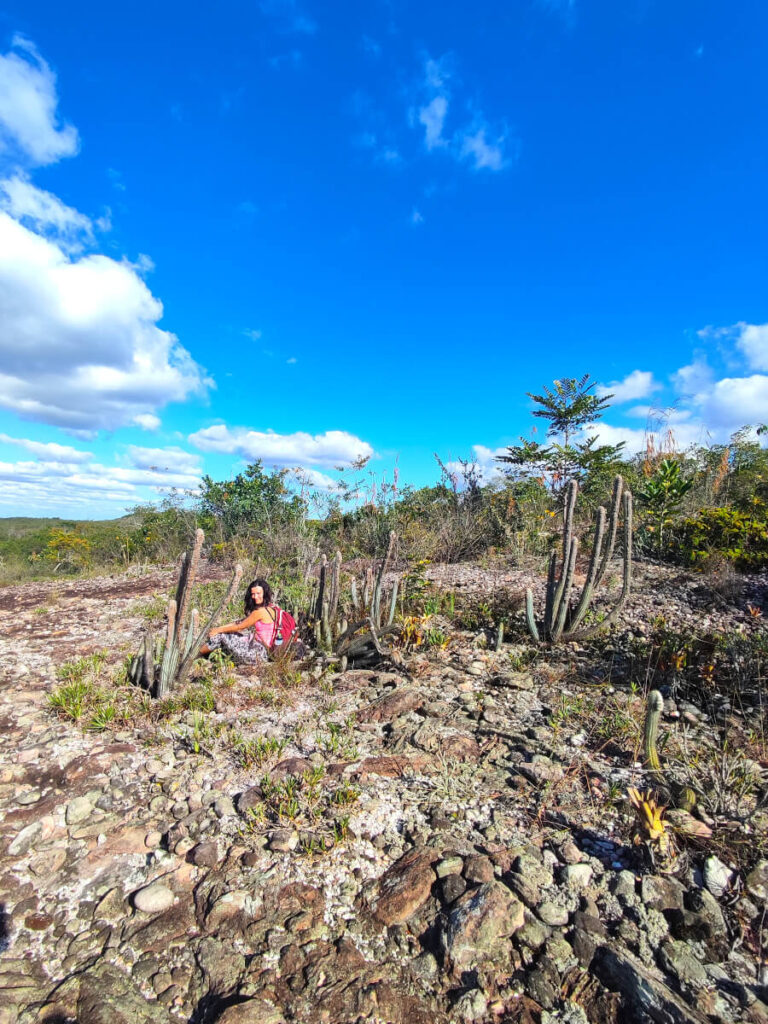
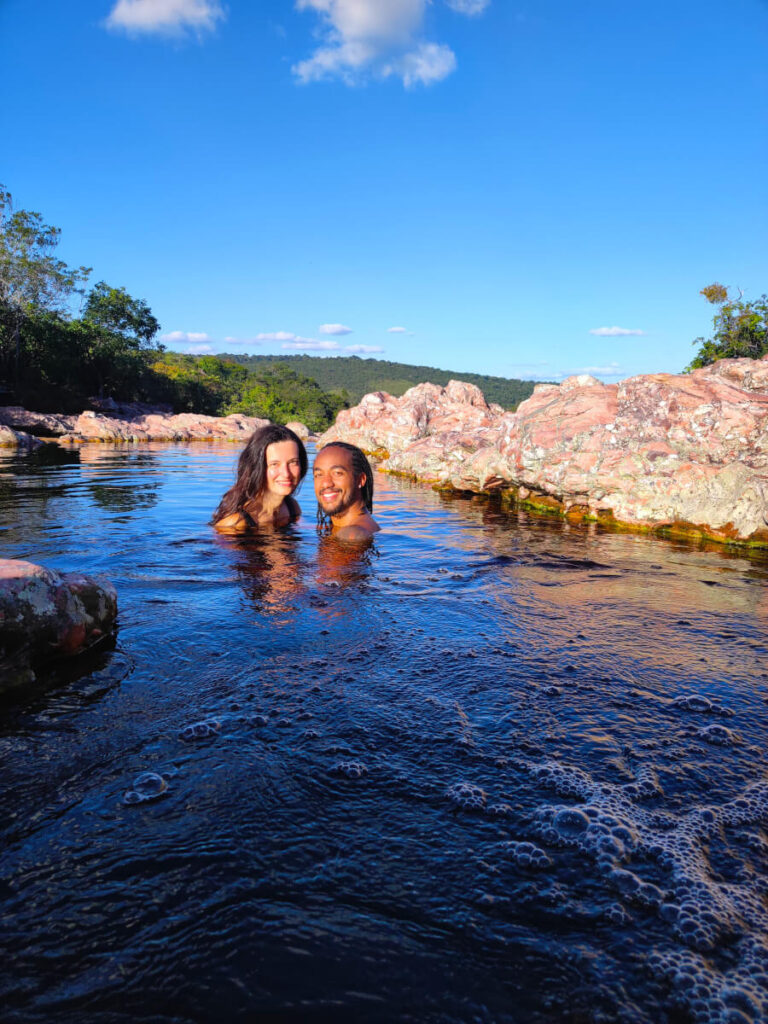
Conclusion
This guide presented everything you need to know about trekking in Chapada Diamantina, specifically between Vale do Capao and Lencois. It is a very rewarding adventure where you will learn more about the fauna and flora in Brazil.
After completing this adventure, we stayed at Chapada Casas da Izete. The owner was kind enough to wash all of our clothes without charging an extra fee. After three days in nature, we needed to do the laundry ASAP.
If you want to know about more adventures in Chapada Diamantina, check Rio Preto & Rodas and the nice Aguas Claras waterfall.

